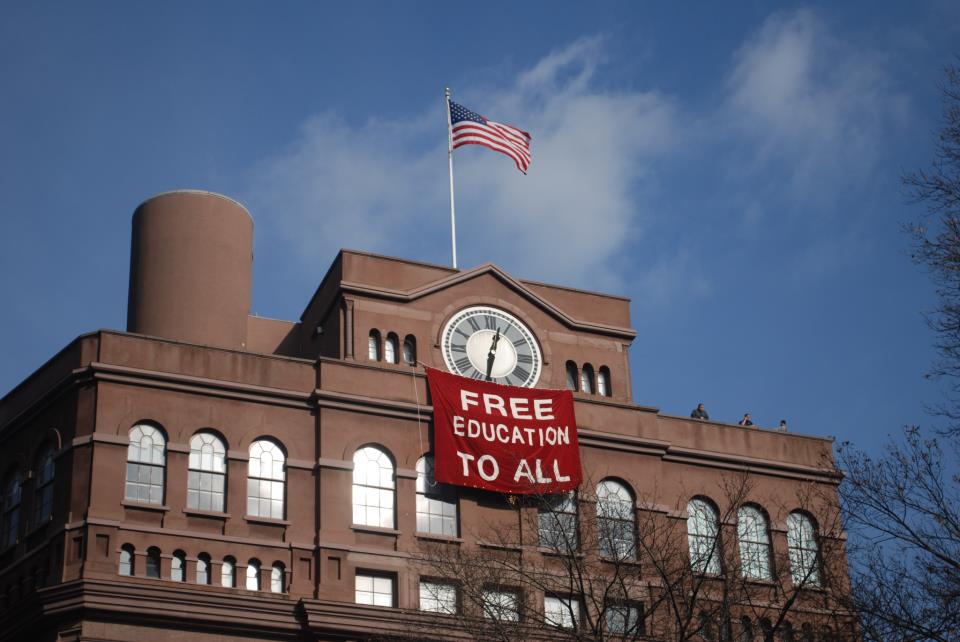Art World
Cooper Union Alumni and Students Strike Back at President’s ‘State of Cooper Union’ Report
They call the president's report "rife with bald-faced inaccuracies."

They call the president's report "rife with bald-faced inaccuracies."

Brian Boucher

A group of Cooper Union alumni and students has released a combative response to a recent “State of Cooper Union” report issued by Jamshed Bharucha, the president of the embattled New York school.
The Committee to Save Cooper Union’s retort followed by one day the news that the New York State Attorney General is investigating the school’s finances in the wake of its recent move to begin charging incoming students tuition after full scholarships for all students since the school’s founding in 1859. (See Scandal Erupts as New York Attorney General Investigates Cooper Union for Shady Financial Dealings.)
The college has discrete schools of art, architecture, and engineering. The school has devised plans for various new revenue-generating programs, which are outlined in Bharucha’s report, which is rich with graphs and tables detailing the school’s financial trajectory.
The Committee to Save Cooper Union’s 15-page response aims to rebut the main points in Bharucha’s confident 12-page appraisal.
Some notable passages follow.
Bharucha writes:
I would like to acknowledge the efforts of all our students, faculty, staff, alumni, trustees, donors and friends as we have weathered a storm and come through intact.
The Committee rebuttal:
Hogwash. “The [Rosy] State of Cooper Union,” as related in the school’s report, does not hold up to scrutiny. It is rife with bald-faced inaccuracies, clumsy attempts to misdirect and mislead readers, and the careful omission of information that undermines its assertions.
Bharucha writes:
Cooper Union was ranked #1 by Princeton Review for “colleges that pay you back.” This ranking is based on surveys of the earning capacity of our alumni, as a function of the cost of attendance.
The Committee rebuttal:
We not only have reservations about the methodology of that ranking, but question its central premise that early salaries versus cost of education are a primary measure of the value of a college education. Not only has “rate of payback” of investment traditionally been an irrelevant measure for a Cooper Union education, the school’s tuition-free model always assured it a superb ranking on such criteria!
Bharucha writes:
While the number of applications for our current freshman class dropped from the year before, the quality is as strong as ever, preserving Cooper Union’s legacy of excellence.
The Committee rebuttal:
In the years prior to Cooper Union implementing tuition (2010–2013) the percentage of incoming students with high school averages above 90% (A) ranged from 73–77%. In 2014, that figure fell dramatically to 63%. High school grades are acknowledged to be the best indicator of success in college, and these have significantly dropped for incoming freshmen at Cooper Union.
Bharucha:
Applications are now in for the fall of 2015. This entering class will be our second admitted under the new Financial Sustainability Plan. The Early Decision class has already been accepted. Total applications are up 5% in Art, down 6% in Architecture, and up 66% in Engineering over the previous year. In Engineering, applications this year are 33% higher than in any year in Cooper Union’s history.
The Committee rebuttal:
The report boasts of engineering school applications being 33% higher than in any year in Cooper’s history, but fails to mention it’s the first year Cooper Union has accepted the “Common Application” which makes it far easier to apply online to multiple schools with a single application and typically results in substantial application increases. Applications have further been driven up by aggressive and expensive recruiting in the Far East.
We may also be seeing an increase in applications from less-qualified students, as online college discussion boards spread the word on lower entry standards and larger admitted classes. The report also shamelessly boasts of a 5% increase in applications to the Art School, but neglects to mention the fact that in the previous year, when tuition was first implemented, applications were down by 47%. A 5% increase after a 47% decline is not a cause for celebration.
In Architecture, the lack of qualified applicants was reportedly so dire that for a normal class of 30, only 19 acceptance offers were made.
Bharucha:
Only by broadening the revenue base with new programs can the half-tuition scholarship be sustained.
The Committee:
There is no mention, much less a breakdown, of the costs that will be associated with these new programs. One example is the new proposed Computer Science Program for the School of Engineering. The proposed program driven by Bharucha-recruited “Chief Academic Officer” and highly compensated Engineering Dean Teresa Dahlberg, was hastily and largely appropriated from courses offered by other universities around the country.
The plagiarized course descriptions were the responsibility of the Chief Academic Officer. We feel that she should be removed for this and other failures to sustain, much less live by, Cooper Union’s historical academic standards. The betrayal of academic integrity is astounding. Students who plagiarize to this extent are failed or expelled, and yet the administration proceeds without concern or consequences.
Even if these ill-conceived programs are “successful,” the expansion of infrastructure needed to support them will saddle the school with fixed costs that doom Cooper Union to never be free again.
Read Bharucha’s report here.
Read the Committee’s response here.